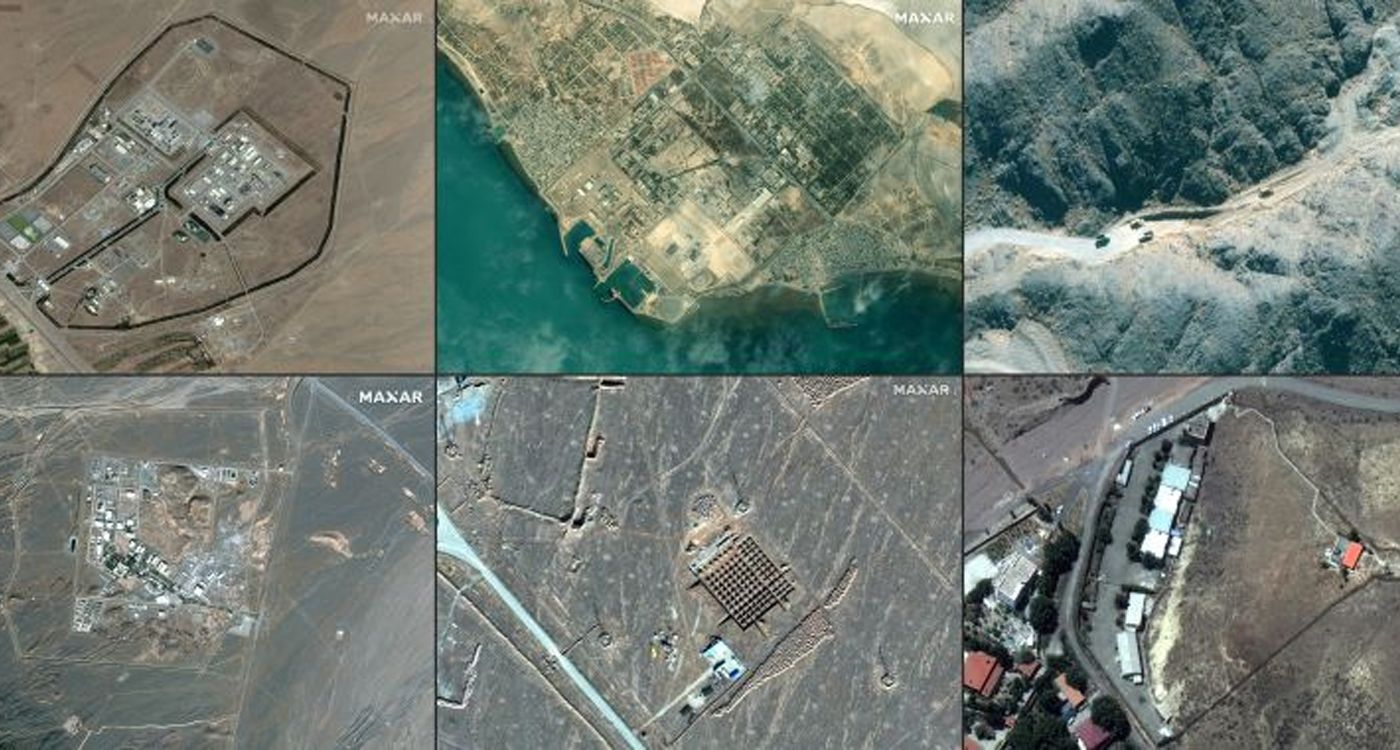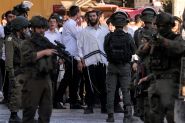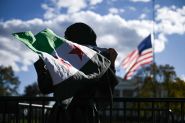- Home
- Middle East
- The JCPOA: The Iranian Nuclear Deal Dismissed Too Soon

As International Atomic Energy Agency (IAEA) Chief Rafael Grossi visits Iran and Donald Trump’s return to the White House draws near, here's what you need to understand about Iran's nuclear program and the fleeting 2015 Vienna agreement.
On Wednesday evening, IAEA Chief Rafael Grossi arrived in Tehran for talks on Iran’s nuclear activities.
His visit, spanning several days, is no coincidence. With Trump’s expected return to the White House in early 2025, any hope of reviving negotiations seems increasingly unrealistic. Moreover, the simultaneous appointment of Marco Rubio as Secretary of State — a vocal proponent of a hardline approach toward Tehran — signals that tensions are poised to escalate in the months ahead.
In light of these bleak prospects, Grossi’s mission appears to be a final diplomatic gambit. During a Thursday interview with Iranian President Masoud Pezeshkian, he stressed that Iran’s cooperation was the only path to “avoiding war.”
At this juncture, securing a new nuclear deal with Iran seems all but impossible. Meanwhile, the Joint Comprehensive Plan of Action (JCPOA), the agreement forged under the Obama administration and abandoned by Trump two years later, now appears definitely dead.
The context of the landmark agreement is rooted in decades of tension surrounding Iran’s nuclear program, which has been viewed by Western countries and their Middle Eastern allies as a serious threat. In the early 2000s, the world discovered that Tehran, despite being a signatory to the Nuclear Non-Proliferation Treaty (NPT), had been secretly pursuing uranium enrichment activities.
Uranium Enrichment Explained
Uranium enrichment is the process of increasing the proportion of uranium-235, an isotope capable of sustaining a nuclear reaction. Natural uranium contains only a small amount of uranium-235 and must be concentrated to become “useful.” To do this, uranium is converted into gas and placed in centrifuges, where the isotopes are separated to increase the concentration of uranium-235.
When enriched to between 3% and 5%, uranium can be used as fuel for nuclear power plants to generate electricity. Between 10% and 20%, it has medical applications, including in radiotherapy, imaging and nuclear research.
However, when uranium is enriched above 20%, it becomes classified as highly enriched, with sensitive potential uses. At 90% enrichment, uranium can be used to produce nuclear weapons.
While Iran has consistently justified its enrichment efforts as necessary for energy and medical needs, concerns have grown in the West and in Israel about the true motives behind its nuclear program. Furthermore, an IAEA investigation found that Tehran was failing to meet its NPT obligations, leading to harsh economic sanctions from the United Nations, the United States and the European Union starting in 2006.
The Joint Comprehensive Plan of Action (JCPOA)
The sanctions imposed on Iran during this period had a severe impact on its economy, particularly crippling its oil exports, while further intensifying geopolitical tensions in the region. Yet, Iran continued its nuclear activities. By 2015, just before the JCPOA was signed, the IAEA estimated that Iran possessed approximately 200 kg of uranium enriched to 20% and about 19,000 centrifuges.
Against this tense backdrop, negotiations began in 2013 under the Obama administration, coinciding with the election of Iranian President Hassan Rouhani, who was viewed as a moderate. For the White House, this presented an opportunity for de-escalation and nuclear non-proliferation, while Tehran sought relief from the severe sanctions.
The talks involved Iran and the P5+1 group—the five permanent members of the UN Security Council (the United States, Russia, China, France and the United Kingdom) and Germany. The European Union played a crucial role in facilitating the discussions.
These negotiations led to the 2015 JCPOA agreement, in which Iran committed to drastically curbing its nuclear capabilities. This included limiting uranium enrichment to 3.65%, reducing its stockpile of enriched uranium, and cutting the number of centrifuges it operated.
In exchange, the sanctions that had crippled Iran’s economy would be gradually lifted, paving the way for a resurgence in oil exports and a partial return to global financial markets. The IAEA was tasked with overseeing Iran’s nuclear sites to ensure adherence to the agreement’s terms.
An Ephemeral Agreement
Although the JCPOA was widely seen as a significant diplomatic achievement, it also faced considerable opposition. Among its staunch critics were Iran's regional adversaries, Israel and Saudi Arabia, as well as the incoming US administration under Donald Trump. After winning the 2016 election, Trump, a strong proponent of maximum pressure on Tehran, regarded the deal as a major misstep.
Two years later, he announces the US’ unilateral withdrawal from the agreement, claiming that it was insufficient to rein in Iran's nuclear and regional ambitions. In parallel, the US reinstated severe economic sanctions on Tehran, which, in defiance of the JCPOA’s limitations, began to gradually resume its nuclear activities.
Upon taking office in 2020, the Biden administration sought to revive the deal through a more pragmatic diplomatic approach. In 2021, indirect negotiations began in Vienna under the auspices of the European Union. As a sign of compromise, the US eased some humanitarian sanctions while maintaining major economic restrictions in place.
Rising Tensions
Despite ongoing efforts, negotiations have stalled. In the same year, ultraconservative Ebrahim Raisi won the Iranian presidential election. By late 2023, the IAEA confirmed that Tehran was producing an average of 9 kg of uranium enriched to 60% per month. At the same time, Iran had significantly curtailed inspections of its nuclear facilities since 2021, shutting down surveillance cameras and revoking the accreditation of expert teams.
Simultaneously, the eruption of the Israel-Hamas conflict further intensified tensions with Washington. While direct military engagements between Israel and Tehran have “relatively” been contained, recent remarks by Israel’s newly appointed Defense Minister Israel katz, stating that Iran's nuclear sites are more vulnerable than ever, underscore the volatile nature of the issue. In turn, Iran has consistently stated that any attack on its nuclear installations would be crossing a red line.
Against this backdrop, the new Trump administration seems poised for further escalation, offering the Hebrew State more latitude than its predecessor—unless it opts for an approach of de-escalation. The New York Times revealed on Thursday that Elon Musk, a member of the new US administration, had met with Iran’s UN Ambassador, Amir Saied, in an effort to “ease tensions.” This development raises hopes for a return to diplomacy, a path championed by Rafael Grossi.
Read more




Comments